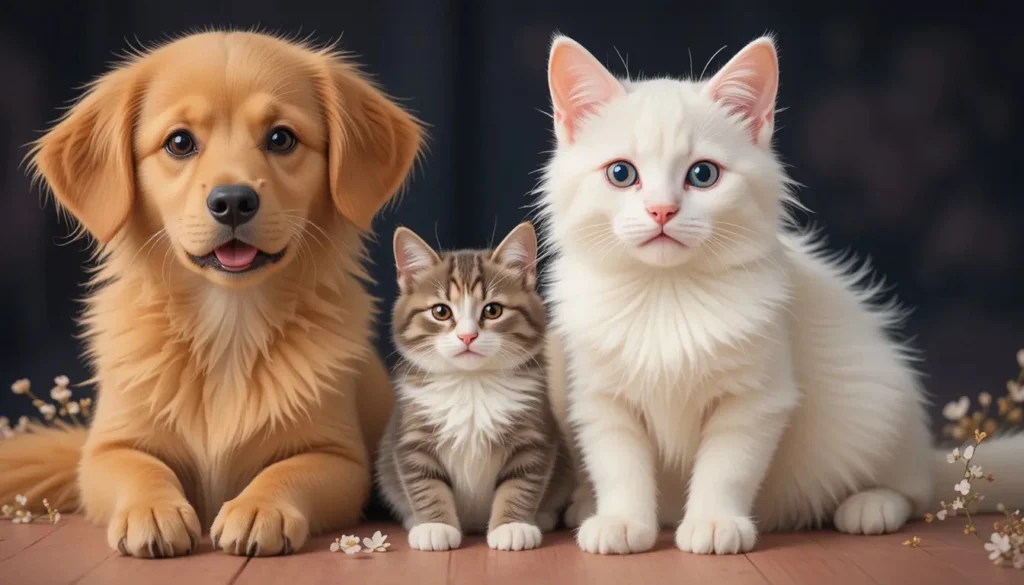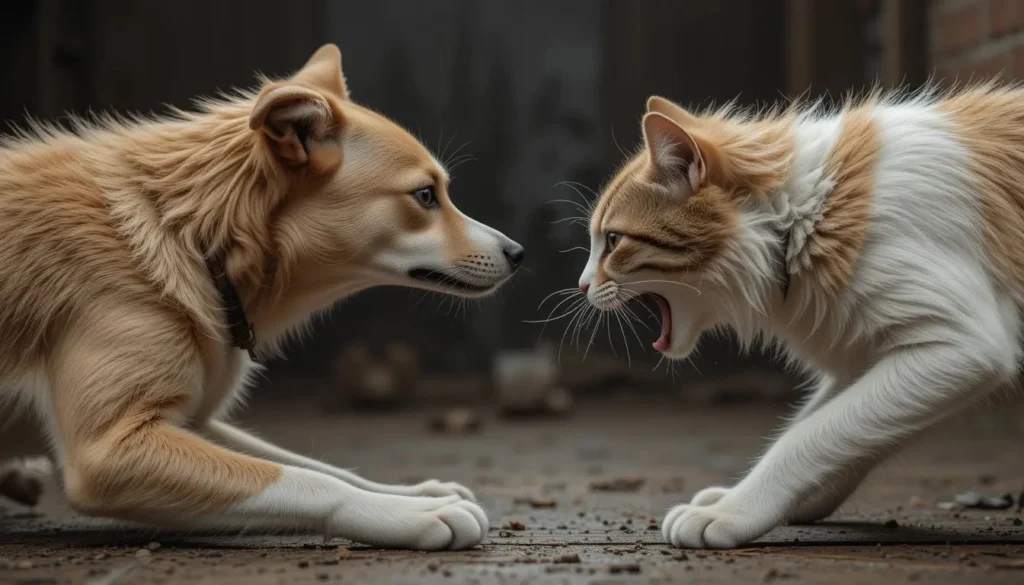Many pet owners dream of creating a harmonious relationship between dogs and cats. These animals are often portrayed as natural enemies, but with the right approach, they can live peacefully and even become great companions. A peaceful bond between dogs and cats not only reduces stress in your household but also creates a loving and joyful environment for everyone. From behavior understanding to cultivating trust and respect, this is your guide to ensure that your pets become friends. Thus, by observing these steps, you can develop tension into harmony and create a happy multi-pet home.
Understanding the Root of Aggression
Why Dogs May Act Aggressively Towards Cats
Generally, if dogs and cats are agonistic towards each other, it may just because the animal has acted in line with its instinct. Some of the dogs which have a higher prey drive, tend to chase the cats naturally and sometimes fear or lack of knowledge bring on the negative effect on the dog. In cases of some unfortunate past experiences in terms of contact with cats, the defensive or aggressive actions by the dog results. Thus one has to identify the underlying reason so that appropriate measures could be taken to remove the problem.
Indicators of Stress or Aggression
This will prevent conflicts from reaching an acute situation. Most of the signs in dogs will be in the form of growling, barking and lunging, while those in cats it may take the form of hissings, arching their backs, swatting etc. These actions may help you detect when there is a trigger and may step in at the right moment.
Importance of recognizing triggers
Knowing the cause of the aggression is the first step towards the solution. Among the triggers is territorial conflict, speed, and battle for the necessity that is food and attention. Once you know what makes your pets angry, then you can proceed to desensitize them for a harmonious environment among all of them.
Preparation of the Environment to Harmonize
Private Areas for Both Pets First
Stamping out all sources of anxiety or a sense of danger creates peaceful distinct zones for every animal. All these animals will then start with sleeping and eating in distinct areas just as the dogs; the cats follow the same route. Exposing them slowly introduces them to one another without threatening each other’s presence.
Introducing scent switching
Scents swapping is probably the easiest way pets will get used to one another. Have them switch the bedding blankets, toys, and cat’s bedding for their dogs so that they may get accustomed to each other’s scents. This is, essentially, a building block up to the actual face-to-face encounter.
Preparing Neutral Meeting Grounds
Choose a place that neither believes belongs to either species for introducing pets. Avoid areas for sleeping and eating. A neutral zone is considered to have decreased chances of attacking and will enable a serene exposure.

How to Introduce Dogs and Cats
Proper Ways of Introduction End
Introduce the pets gradually starting with short exposure periods. Start by keeping the dog leashed and separate them with a baby gate to allow them to see each other from a safe distance and then gradually reduce the space between them in sessions.
Reading Body Language
Observe the body language of your pets as you introduce them. When animals become comfortable, body language relaxes for dogs, this can be a wagging tail, and for cats, slow blinks. Signs of tension will prompt you to slow down the process.
Rewarding Positive Interactions
Positive reinforcement is encouragement of good behavior. Reward your dog and cat with treats, praise, or even affection every single time they stay silent in the presence of one another. This can help teach them to associate the other’s presence with good experiences.
Training Techniques for Dogs
Basic Commands to Reduce Aggressive Behavior
Teach your dog the basic commands of “sit,” “stay,” and “leave it.” This will enable you to regulate your dog’s behavior when playing with your cat. Train your dog in a quiet environment before using the commands in interactions with your cat.
Positive Reinforcement for Calmness
Reward your dog for being calm and gentle around your cat. Reward them with treats, praise, or playtime when they are calm and gentle around your cat. Repeated positive reinforcement will make your dog understand that calmness is rewarded.
Management of High Prey-Drive Behaviors
If your dog has a high prey drive, use redirection techniques to get him or her focused away from the cat. Interactive toys, puzzle feeders, or training exercises will keep him or her busy and less likely to want to chase.
Building Trust and Bonding
Engage in Joint Activities for Both Pets
Shared playtime or shared activities can also help your dog and cat to bond. Make use of interactive toys, such as wand toys for cats and fetch toys for dogs, to build positive shared experiences.
Encourage Mutual Respect and Patience
On this, train your dog to respect the cat’s space and vice versa. Teach your cat to see safe havens by offering it a number of high perches or means to escape when threatened. Gradually, mutual respect evolves into a feeling of security for both pets.
Constant routines
Feeding, playing, and training schedules will help reduce the stress in both the pets. A regular routine provides a sense of security while responding more effectively to become well-acquainted with one another.
When to Seek Professional Help

Signs That Indicate Intervention
When your dog fails to change his behavior despite all your efforts, it is high time to call for professional help. Such signs include continuous growling, lunging, or trying to harm your cat.
Benefits of Professional Training or Behaviorists
A certified trainer or animal behaviorist can offer strategies tailored to address the issues with your pets. Their experience is what may bring a lot of difference between coexistence peacefully and otherwise.
Tips to Choose the Right Expert
Consult experts with experience in multi-pet households. Read reviews, get referrals, and make sure they use only humane and positive reinforcements.
Long-Term Harmony
Checking for Regression Signs
Even after such harmony is achieved, sometimes the battle will break up once more. Continue checking on your pets’ behavior and always act promptly at signs of tension to prevent regression.
Ongoing Training and Positive Reinforcment
If given after months of trainings and positive reinforcements, then good behavior is encouraged. Reinforce friendly and calm interactions day in, day out.
Celebrate Small Victories and Strengthen the Bond
Celebrate small victories such as the sharing of space by the pets peacefully or playing together. This then strengthens the bond that fosters good behavior.
Peaceful can only exist between dogs and cats if one has patience, understanding, and consistency. Dealing with underlying causes of aggression, environmental preparing, and gaining trust leads to a home where your pets live in harmony. With time and effort, your dog and cat will develop a friendly relationship that makes your family jovial and full of love.
Related post
Peace Lily & Dogs: Keeping Pets Safe & Happy
Protect Your Cats: Snake Plant Safety Tips






